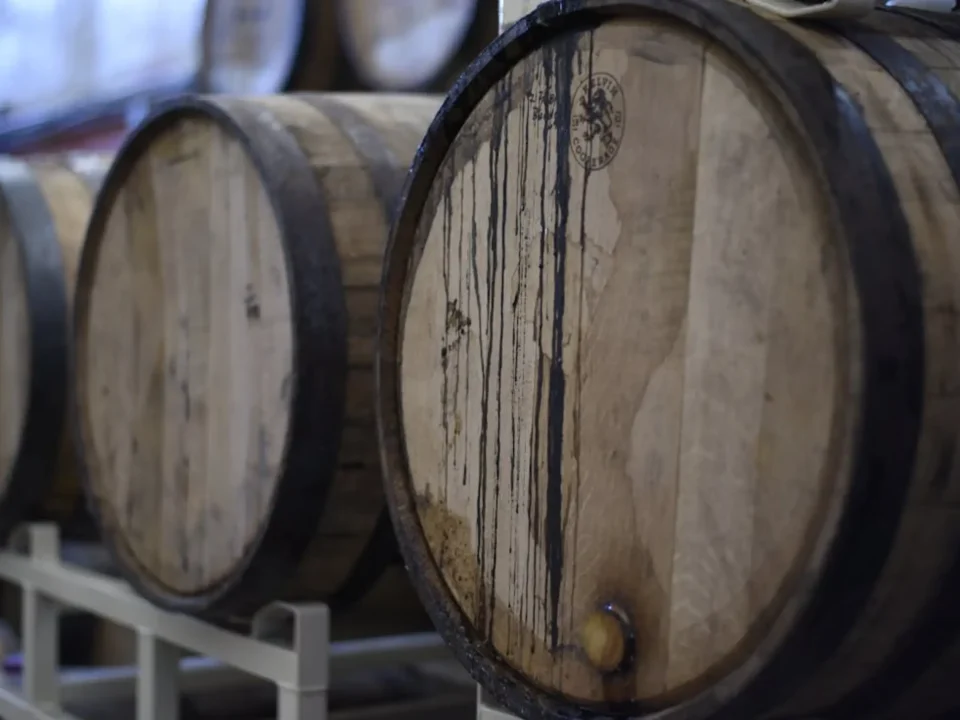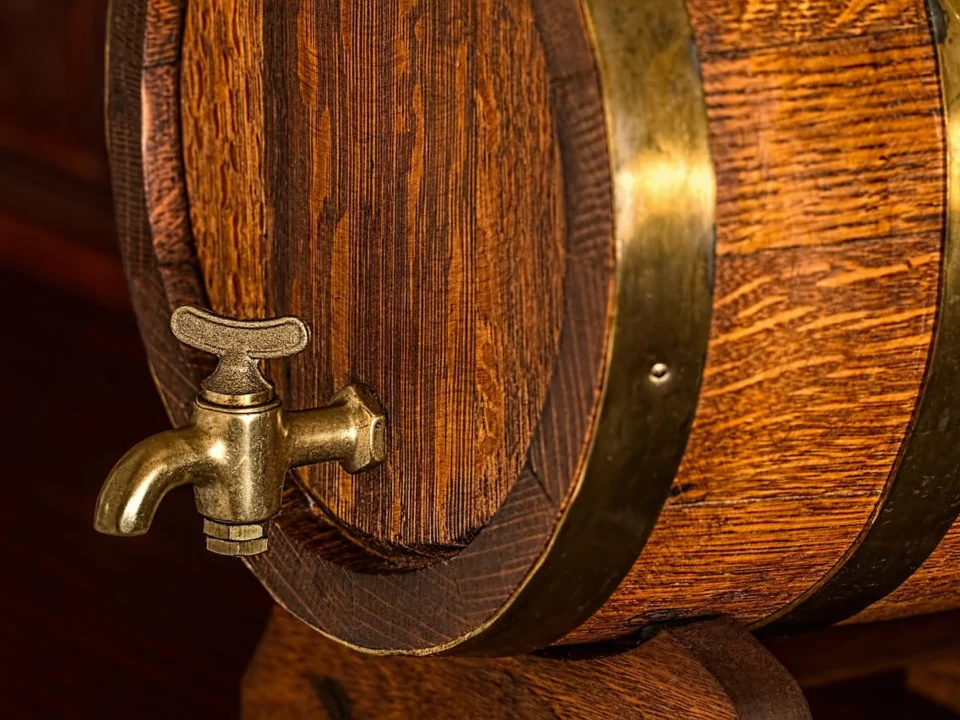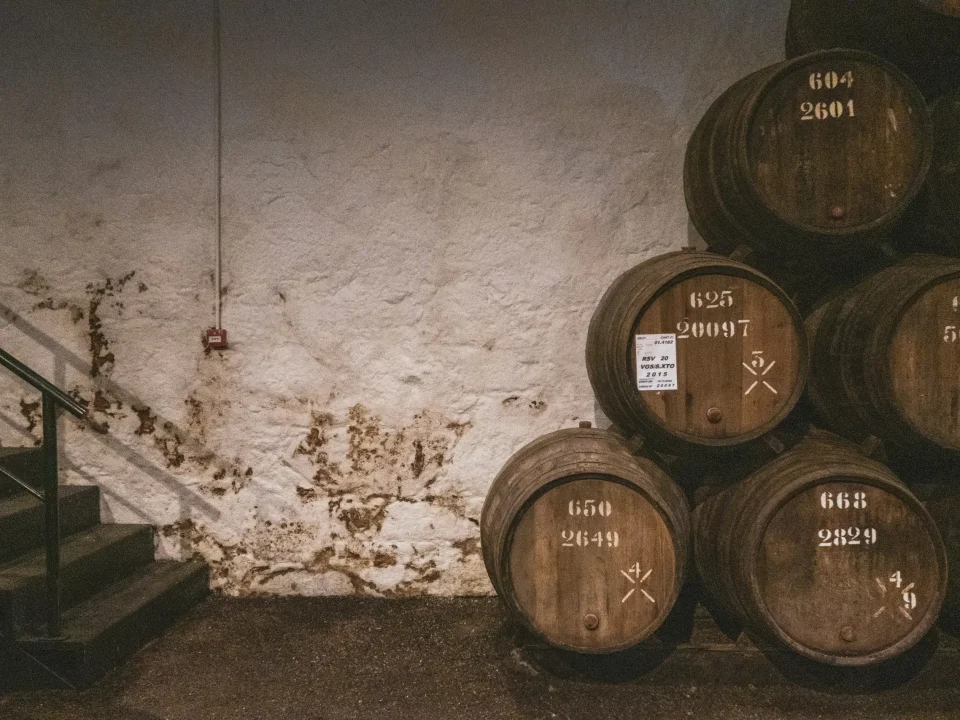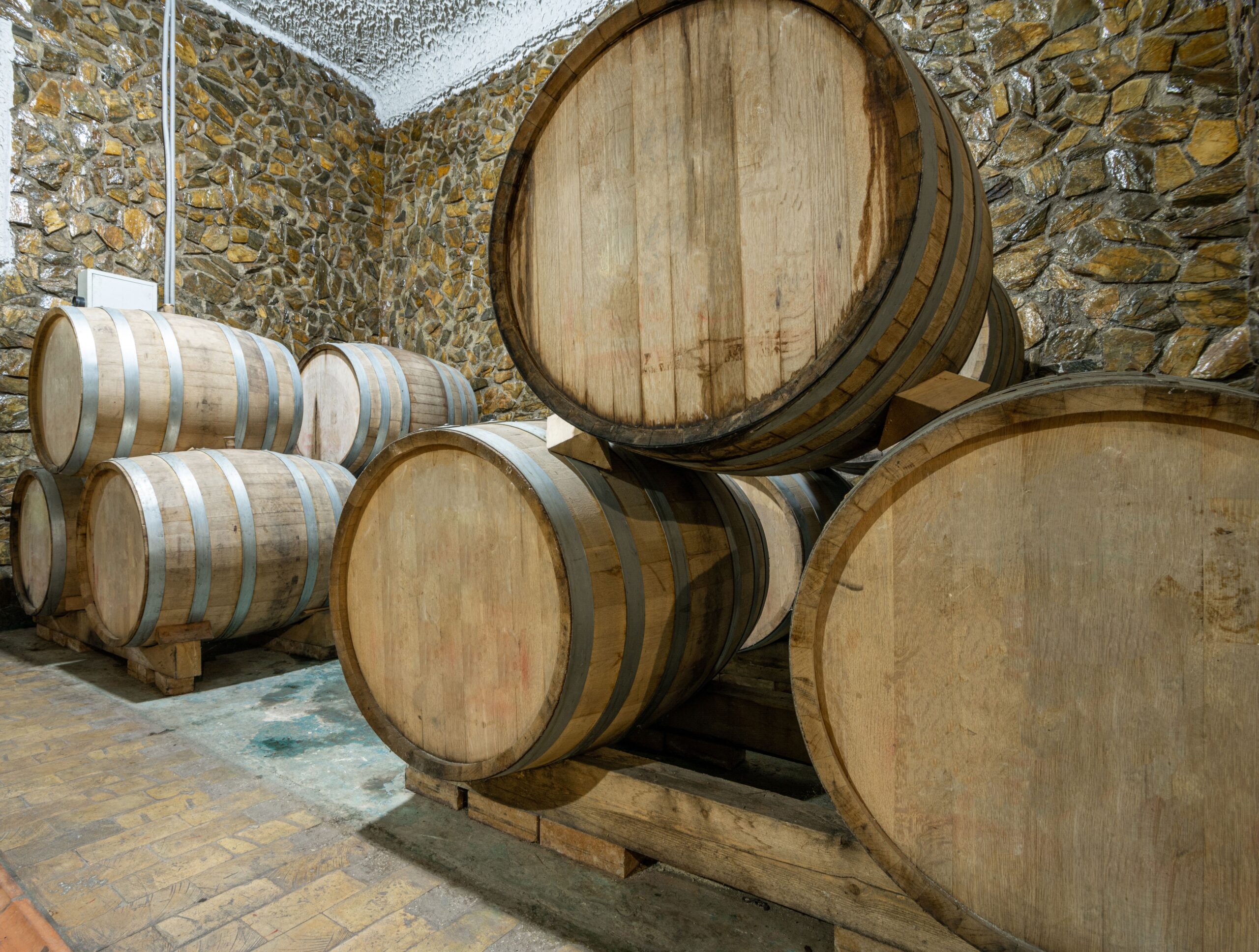
Toasting Techniques: How Winemakers Customize Oak Flavors in Barrels
January 24, 2024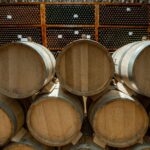
Barrel-fermented Wines: Unveiling the Unique Characteristics
March 1, 2024A barrel is a cylindrical vessel used to store liquids. Traditionally made of oak wood and featuring a hollow interior, barrels are commonly found in the making of bourbon, whiskey, wine, and beer production processes – with differences between types impacting how beverages come out; used whiskey barrels tend to be smaller than used wine barrels; they may have unique shapes; can feature different finishes; may also contain specific varieties of oak like white or red oak which affect how the final beverage comes out.
Over time, the liquid within a barrel undergoes a gradual transformation influenced by its interaction with the surroundings and environmental conditions. The composition evolves slowly, exhibiting subtle or dramatic changes depending on its inherent makeup. As such, pressure must be checked regularly to detect and repair leakages as soon as possible before being put to use. To pressure test barrels, fill their interior with an incompressible liquid such as oil or water and mix in dyes to facilitate the detection of leaks or changes to pressure profiles. Measure its pressure with a pressure gauge – any significant pressure drop indicates an issue and should be investigated further.
As is often the case in distilleries, small distillers used first-fill ex-bourbon barrels for their spirits as the wood was affordable and abundant. As the popularity of craft bourbons grows, distillers worldwide face challenges in sourcing sufficient first-fill ex-bourbon barrels. Consequently, many turn to secondhand barrels, necessitating proper conditioning to avoid introducing undesirable flavors into their whiskey products. Many winemakers use used whiskey barrels to age their wines, as these cheaper barrels provide desirable oak aromas and flavors.
Below Discussed Are Some Commonly Used Techniques to Pressure Test Barrels:
Hydrostatic Testing
As any distiller or brewer knows, wooden whiskey barrels provide unique flavor profiles for their spirits. Most whiskey barrels made of white oak grown throughout the eastern United States are known for being resistant to rot and decay and having strength and durability features that make these barrels desirable. These barrels may be charred, toasted, or untoasted depending on desired tastes for optimal results. Barrel aging processes vary considerably for bourbon and whisky. However, Scotch whisky typically uses secondhand bourbon barrels that have been sold to other producers who reuse them in their whisky production.
Distilleries can also adjust their warehouse temperatures to create different products. Some bourbon distillers use heat cycling to expedite aging processes, while others opt for cooler warehouses for their products. Some companies even took their aging barrels on a four-year cruise at sea for Ocean-Aged Bourbon production – this process enables more humidity into the barrel. It alters air pressure inside, altering its flavor profile significantly.
Read more: Why Used Bourbon Barrels are a Favorite Among Distillers
Hot Water Swelling
Used barrels submerged in water and left to expand are essential in creating the ideal conditions for wine or whiskey storage. By sealing off their pores with water and waiting, these used barrels become sealed against leakage during barrel aging and ready for filling with wine or whiskey. All barrels need swelling to function effectively. Even if it was recently emptied and has had only limited time to dry out, soaking it with water can help the barrel to expand and swell, sealing its contents and maintaining their integrity. This aids in preventing leaking barrels as well.
Read also: Barrel Ageing: Easy Steps to Fix Dry or Leaking Barrels!
Ideally, this can be accomplished by setting the barrel on a standard barrel rack with its bunghole facing up, pouring 100 degree Fahrenheit hot water through it for two hours while periodically rolling it back and forth to coat its interior surfaces with liquid. Be sure to work in an environment with adequate ventilation as SO2 gas can be toxic; drain and fill your chosen beverage once swollen. This meticulous sealing process creates the ideal environment for maturation and flavor development. Contact our barrel experts at Rocky Mountain Barrel Company today to learn more about these processes!
Patching a Leak
Used whiskey barrels, bourbon, and wine barrels often suffer from seepage at their joints or bungholes, often due to manufacturing flaws or rough handling during transportation and storage. Furthermore, this could indicate internal leakage contaminating the stored products and necessitating repairs or replacement. Seepage and leaking barrels can often be treated with a dry patch, for which many barrel retailers sell wooden spiles and wedges.
Alternatively, hot iron or blow torch heat can generate a paste-like substance. You apply it directly over the problematic area to temporarily seal any leaks. However, this method is suitable only as a last resort for whiskey barrels, bourbon barrels, and specialty liquor barrels, but it works well for wine barrels dumped multiple times and barrel-aged products.
Swelling a New Barrel
A thorough swelling process is integral to revitalizing and preparing used whiskey barrels and used wine barrels to age spirits and wines. By carefully cleaning and selecting suitable liquids to augment this process, wooden storage barrels can be returned to their prime state, encouraging the cultivation of complex flavors. To get the best quality used wine barrels, wine, and other barrels, get in touch with Rocky Mountain Barrel Company today!
Leaking Barrels are a significant risk to any distillery or winery, so early identification is essential to repair them before they become permanent. Leaks in barrels may result from various causes, including improper construction, handling during transportation and storage, wood shrinkage, or just wear and tear – yet regardless of its cause, leaks in your barrels can harm product quality and cause contamination issues that threaten consumer health. Luckily, most small bourbon barrels that leak can usually be fixed with just a few steps.
Importance of Pressure Test Barrels
Barrel aging of wine is an intricate and involved process with far-reaching effects on its final quality. As an integral component of wine production, barrel aging is crucial in creating high-grade, elegant wines. Pressure test barrels become essential to ensure this process goes smoothly. Barrels are constructed out of wood heated (soaked) at a specific temperature for an extended period to extract aromatic components and protect them against oxidation and taint from oak while increasing oxygen transfer and permeability. Oxygen transfer is crucial for successful wine aging in barrels. The liquor interacts with the wood surface, releasing extractable compounds that enhance the aroma and flavor of aged wines. The concentration of these compounds depends on factors such as the wood species, geographic origin, and the cooperage process, which includes manufacturing, seasoning, and dimension.
As barrels age, their contents become saturated with bound SO2, which may result in off-flavors in the final product if left uncovered or unwashed properly. It’s important to pressure test barrels regularly to ensure their utmost performance. If you are looking for Jack Daniels Barrel for aging sprits, you may contact Rocky Mountain Barrel Company.
Conclusion
There are various methods of pressure testing a used whiskey bourbon or wine barrel, but certain strategies are more efficient than others. Pressure test barrels ensure the utmost quality and offer the desired taste, aroma, and texture that distillers want in their final product. Learn more about these process and a lot more about barrel aging only with Rocky Mountain Barrel Company. Visit us today!


